Hillary Clinton Drops One Shoe On Keystone XL, White House Drops Another
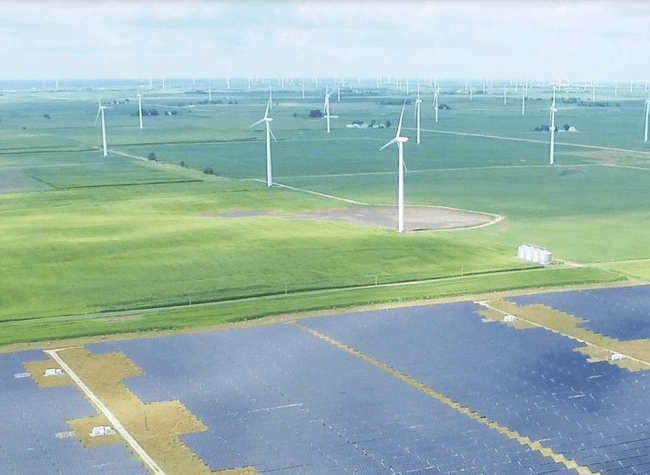

Earlier this week, Democratic presidential candidate Hillary Clinton officially, finally, and definitively stated her opposition to the proposed Keystone XL tar sands oil pipeline. The news comes amid a huge week for renewable energy in the U.S., coinciding with Climate Week 2015 in New York City and a visit from climate activist and global leader of the Catholic faith, Pope Francis, who will address the United Nations General Assembly on Sept. 25.
The Clinton statement also comes at a particularly bad time for the controversial Keystone XL pipeline. The proposed project has been limping to the finish line of a long approval process marked by an epic fail in terms of stakeholder engagement, and its chances of receiving the necessary White House approval have been fading by the minute.
Evolving on the Keystone XL pipeline
Clinton's position on the Keystone XL pipeline has certainly evolved since her tenure as Secretary of State. As a project crossing the border between the U.S. and Canada, Keystone requires State Department approval, and back in 2010, then-Secretary Clinton provided an unscripted rationale for approving the project.
As reported in Mother Jones, her comments provoked an outcry from environmental groups, though in the full transcript Clinton clearly articulated a position that dependency on "dirty oil," regardless of the source, is a fact of life in the U.S. "until we get our act together" for renewable energy.
In fact, Clinton immediately followed up that line by suggesting that projects like Keystone would continue to be necessary precisely because of the U.S. Senate's failure to pass legislation in support of clean energy -- legislation that she and President Barack Obama strongly favored.
Be that as it may, the pushback was so strong that Clinton never made another comment about the project as Secretary of State. Even as a presidential candidate, she refrained from taking a position despite repeated requests over the summer.
The breakthrough finally came at a campaign stop in Iowa earlier this week. As reported by NBC News, Clinton had this to say about Keystone XL:
"I think it is imperative that we look at the Keystone XL pipeline as what I believe it is: A distraction from the important work we have to do to combat climate change, and, unfortunately from my perspective, one that interferes with our ability to move forward and deal with other issues."Therefore, I oppose it. I oppose it because I don't think it's in the best interest of what we need to do to combat climate change."
Now, the Obama administration dropped the other shoe. Yesterday, Reuters reported that White House spox Josh Earnest was asked to respond to Clinton's Keystone statement, and he stated back that "there was nothing 'widely reported' about Clinton’s comments that he would 'strenuously disagree with.'"
According to Reuters, Earnest also reminded the press that the president was "skeptical" of claims by Keystone supporters that the project would have a significant impact on job creation and economic growth.
Cost of solar falling down
The Senate still hasn't gotten its act together in support of national clean energy legislation, but since 2010 the Obama administration has been pulling the levers of its executive authority to steer federal agencies in the direction that Clinton pointed to.
According to the Energy Department, the cost of solar is already competitive with conventional sources in 14 states, and the latest report from the U.S. Energy Information Agency paints a picture of spectacular growth in solar generation across all 50 states.
Last week, the Energy Department announced a new $102 million package of funding for solar projects focused on cost-cutting, including next-generation concentrating solar power technology aimed at the utility market.
This week, the Energy Department also doubled down on the small-scale, distributed solar market with the launch of its new Race to 7-Day Solar challenge. The friendly competition between five teams, including heavy-hitters SolarCity and Sunrun, is aimed at streamlining an often cumbersome permitting process for rooftop solar installations, enabling property owners to get the whole thing done in a week, or even less.
Cost of wind energy falling down
This has also been a big year for wind energy. In January, for example, the Interior Department okayed a building permit for a massive new 515-mile wind energy transmission line for Arizona and New Mexico. And over the summer, Rhode Island celebrated the first "steel in the water" for what will become the first offshore wind farm in the U.S.
Even without offshore assets, according to an Energy Department report, last year the U.S. was leading the globe in wind energy production. The report further notes that utility-scale wind is already competitive with conventional fuels in many markets across the country, and another Energy Department report demonstrates growth in the small-scale, distributed wind energy sector.
Getting back to the Keystone pipeline: Over the summer, rumors were flying around the Canadian press that President Obama would put the kibosh on the project as early as this past Labor Day, and with campaign frontrunner Clinton firmly in the "no" camp, it looks like the White House could be reserving its own final statement for the right time.
Image (screenshot): via Clinton campaign issues, climate.
The Trends That Are Creating the Next Wave of Sustainable Business Models
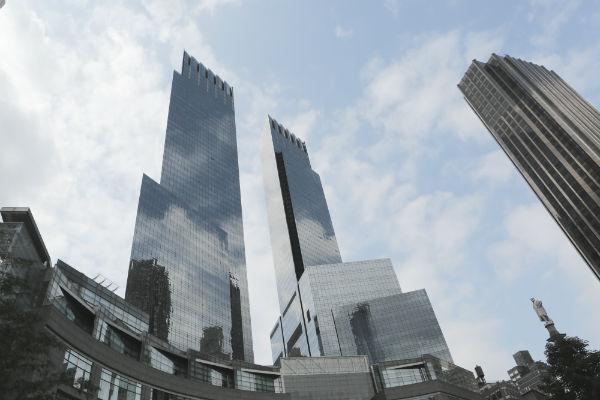

By Anum Yoon
During the Industrial Revolution, and for some time after it, the focus of many businesses was growth and development. Rapid expansion took place without regard to long-term stability, fair practices or sustainability. Being the biggest and best was most important; the rest was in the details.
Lately, there’s been a cultural shift, especially in the business world. The model of growing fast and wiping out whatever stands in the way is becoming dated. Today’s focus? Sustainability. Below are a few of the trends that are creating the next wave of sustainable business models.
Superlinear scaling
Nature published a study in 2010 which found that, when a population of a city doubles, per-capita economic productivity increases by around 130 percent on average. It’s logical that productivity would increase when the number of people in a city increases, but why on a per-capita basis?One answer, proposed by the MIT Media Laboratory’s Human Dynamics Lab, is superlinear scaling. This theory – also referred to as social-tie density – states that increases in population density in urban settings allows more face-to-face interaction for residents.
According to Alex “Sandy” Pentland, director of the Human Dynamics Laboratory at MIT: “When you pack people together, something special happens … This is the sort of thing that Adam Smith wanted to explain. He explained it through specialization: People were able to narrow what they did to get better at it and because they were nearby, they could trade with each other.”
Put simply, the more interactions individuals have on a daily basis – face-to-face, digitally or otherwise – the more productive they’re able to become. This enables a new focus and push for sustainable business practices as more individuals become conscious of their impact on the world and take the time to choose the right company to service their needs.
Non-location dependent connections
In the past, to connect with others, a certain level of travel and scheduling was required. This slowed growth and prohibited many potentially valuable connections in the business world.
With the rise of digital technology, social networking, telecommuting and other practices, connections can form regardless of locations. These connections allow for easy communication and the sharing of ideas, similar to the effects of superlinear scaling. In fact, at many newer, more innovative companies, the percentage of employees that telecommute in one way or another ranges from 30 to 45 percent.
When employees are able to connect at any time, from any location, they are able to communicate with ease and to focus on factors other than the standard “getting to the office and checking off today’s to-do list.” This means that business practices come to the forefront and that sustainability becomes more important than it was in the past. The rise in social technology has a direct impact on sustainable business models.
Enlightened leadership
While other, more balanced business models are growing in popularity, many still retain a certain level of the “top-down” style. When an idea comes from leaders at the top, it requires fewer checks and balances, has fewer channels to travel through and is more likely to take effect. When leaders become more enlightened and more focused on sustainability, change is more likely to happen.
Today, more businesses are looking for ways to use their influence to start conversations and actions relating to value, purpose and class – all important aspects of sustainability. When management and top leaders at big companies – like Nike and Starbucks – begin to look at the bigger picture, change is more likely to take effect. This starts with enlightenment and a focus on change.
The rise of the sharing economy
In the past, consumers and businesses alike were focused on bottom-line purchases. Once a home was sold, it was designed to be used as a primary residence. When there was a need for a household appliance that receives little use throughout the course of the year, or a child’s toy that would be built once and forgotten, it was purchased, then likely stored away for an indeterminate amount of time. Object permanence was in; the idea of sharing was out.
Today, the idea of a sharing economy is rising. Websites like Airbnb, that allows homeowners to rent out rooms or their homes on their own, or Pley, that allows parents to rent out otherwise expensive Lego sets for their children to build, then return, are on the rise. The idea that objects can be borrowed at a lower cost and in a more practical manner is growing.
This change in thought and business practices creates a direct path toward sustainability. Use what you need, when you need it, then allow someone else to do the same. This trend thrives because of the increase in digital technology and connectivity, and is an important driver in the movement toward sustainable business models.
Today’s focus on business sustainability, coupled with emerging technological and social trends that have not been possible in the past, means that real change is happening. It’s exciting to consider what the future holds as these trends continue to take hold and grow in a global manner.
Image credit: Life of Pix under Creative Commons license
Anum Yoon is a writer who is passionate about personal finance and sustainability. She often looks for ways she can incorporate money management with environmental awareness. You can read her updates on Current on Currency.
How Two Dogged Clean Air Sleuths Exposed Massive VW Deceit
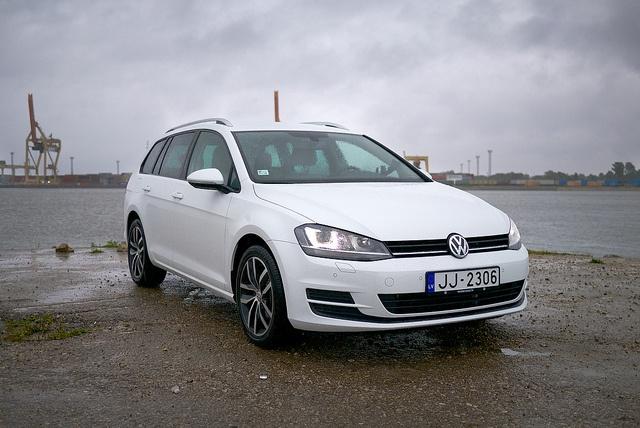

Editor's Note: This post originally appeared on EWG's Enviroblog.
By Elaine Shannon
If you’re looking for environmental heroes – and who isn’t – take a look at mine: Peter Mock, Europe managing director of the obscure but well-informed International Council on Clean Transportation, and John German, a senior fellow at the council.
Mock and German smelled a rat – actually, nitrogen oxide, a sugary-smelling but dangerous air pollutant – belching out of Volkswagen diesel engines made for the European market. Engineering clean diesel is no drive in the park – scrubbing out nitrogen oxide can cut drastically into fuel economy, according to Spectrum, a professional engineering journal. But when nitrogen oxide is released, it contributes to forming smog, accelerates climate change and exacerbates respiratory diseases such the current asthma epidemic, which the Centers for Disease Control and Prevention estimates to affect 23 million Americans, including 6 million children.
According to a detective fiction-worthy account in Bloomberg Business News, Mock and German assumed that the VW diesels manufactured for the more rigorously regulated U.S. market would test cleaner, so they contracted with West Virginia University’s Center for Alternative Fuels, Engines and Emissions to test a bunch of them. Their goal was to convince European regulators to tighten up their emissions standards. If VW could make clean diesel for America, why couldn’t it do the same for Europe?
Mock and German are not whistleblowers, nor are the WVU researchers who wielded the instruments. All were astonished and disturbed when the made-for-the-U.S. VW diesels scored acceptably low for emissions during tests BUT spewed noxious pollutants on long road trips.
The West Virginia University researchers made their study public at a forum in San Diego in May 2014, with officials from the EPA and the tough California Air Resources Board present. Those officials started talking to VW and running their own tests. According to a technical but devastating notice of violation and timeline released by EPA last week, VW officials obfuscated for months and only recently, confronted by the regulators with smoking-gun evidence, admitted the whole scheme. They confessed that the company had deliberately installed a “defeat device” in diesel vehicles sold worldwide from 2009 to this year. The device was really a bit of software coding expressly engineered to spoof standard emissions testing instruments and evade the federal Clean Air Act and related state rules. Exactly who in the company’s front office authorized the plan remains to be discovered.
All of this became public last Friday as the EPA and California officials announced that they had opened investigations of the company for rigging emission controls. EPA also ordered a recall of nearly 500,000 vehicles sold in the U.S. between 2009 and 2015. Yesterday, the disgraced company, which branded its diesel-powered vehicles as clean, simple, affordable “people’s cars,” expanded the recall to a mind-boggling 11 million cars worldwide. It also said it would set aside half a year’s profits of about $7.3 billion to fix the cars, pay fines and settle customers’ lawsuits.
That cost could turn out to be far greater, in terms of money and corporate agony: the U.S. Justice Department’s Environment and Natural Resources Division is opening a criminal investigation, which means that FBI agents will soon be flashing badges at VW plants in the U.S. and asking their counterparts for help at the company’s main office in Wolfsburg, Germany.
German, European Commission and Korean officials have indicated that they, too, may open investigations, and two Congressional panels may hold hearings, Bloomberg Business News reported Monday. Other U.S. and foreign government bodies may spearhead separate investigations. And as Philip E. Ross of Spectrum magazine wrote, “Even after VW pays the multibillion-dollar bill to refit its diesel cars to meet EPA standards, its customers will have to pay a price, too. Because their cars will get worse mileage, they will command a lower resale price.”
VW officials know what’s in store for them all too well. On Monday (Sept. 21), Michael Horn, head of the Volkswagen Group of America, groveled before a star-studded audience assembled at what was supposed to have been a glorious launch of the company’s popular, redesigned 2016 Passat.
“Our company was dishonest, with the EPA and the California Air Resources board and with all of you, and in my German words, we have totally screwed up,” Horn said. “We must fix those cars, and prevent this from ever happening again, and we have to make things right – with the government, the public, our customers, our employees, and also very importantly our dealers.”
“Millions of people across the world trust our brands, our cars and our technologies,” company chief executive officer Martin Winterkorn said in a video message yesterday, according to the Associated Press. “I am endlessly sorry that we have disappointed this trust. I apologize in every way to our customers, to authorities and the whole public for the wrongdoing.” Winterkorn stepped down today. The stealthy software was created on his watch.
This is a 21st-century take on the old David-and-Goliath story: a $12 million-a-year nonprofit and a land grant university’s $4 million program – with all of seven faculty members, five engineers, five technicians and 30 M.S. and Ph.D. candidates – have forced the world’s largest automaker (market capitalization $126 billion, annual sales $269 billion, 593,000 employees, according to Forbes) to its knees.
Perhaps the most heartening aspect of the story is that unmasking VW’s grand deception wasn’t done with the most sophisticated technology or by the most celebrated engineering institutions. Mostly, it took moral energy, meaning, sheer guts and grit, qualities to which we can all aspire.
Mock holds a doctor’s degree in engineering from the University of Stuttgart. He spent some years at the German automaker Daimler’s global environmental protection department and at the Institute of Vehicle Concepts of the German Aerospace Center.
German has a bachelor’s degree in physics from the University of Michigan and, his bio says, “got over half way through an MBA before he came to his senses.” He spent most of his career working on fuel economy for Chrysler, managing environmental and energy analyses for American Honda, toiling in EPA’s Office of Mobile Sources lab in Ann Arbor and writing a book on hybrid vehicles. And, oh, yes, while at Honda, he was the first recipient of the Barry D. McNutt award, presented annually by SAE International (formerly the Society of Automotive Engineers) for Excellence in Automotive Policy Analysis.
So it was just a couple of guys with a lot of life experience who knew how to ask exactly the right questions and who wouldn’t quit asking, teamed with some highly competent and independent-minded university scientists and engineers. As Wired, the online technology news outlet, headlined its story, “VW Could Fool The EPA But It Couldn't Trick Chemistry.” The Wired piece reported that the software signaled the catalytic converter to scrub emissions vigorously whenever the car was being tested but to ease off – and burn less fuel – when the car went on the road. How did the chip in the car know it was being tested? Probably because the steering column wasn’t moving but the wheels were, Wired reported. Smart and very hard to crack, but now VW’s scheme – and image -- are shattered.
The heroes of this saga aren’t done.
“We need to ask the question, is this happening in other countries and is this happening at other manufacturers?” German told The Guardian newspaper. “Some part of our reaction is not even understanding what has happened exactly.”
Any CEO of any automaker who doesn’t take these fairly humble comments seriously, triple-check his company’s emissions-testing software, recode it if warranted and tell the EPA and Justice before they come calling – is living on Pluto.
Image credit: Flickr/Kārlis Dambrāns
Cargill Releases New Policy On Forests
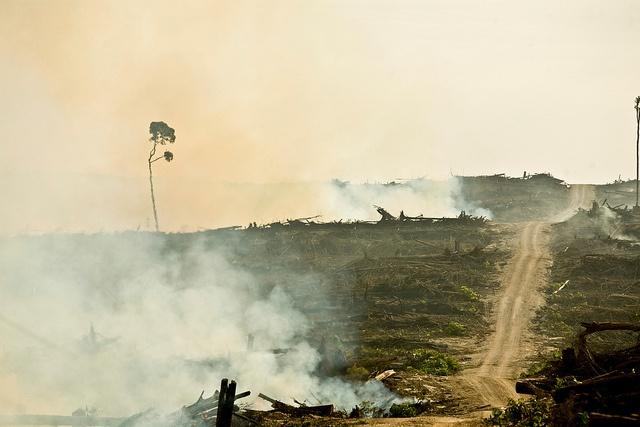

Cargill is serious about stopping deforestation in its supply chain. The company recently issued a new policy on forests, which it describes as a “comprehensive approach” to ending deforestation.
The new policy piggybacks on what Cargill has already done. Last September, Cargill endorsed the New York Declaration on Forests at the U.N. Climate Summit where the company pledged to cut deforestation in half by 2020 and end it in 2030. Cargill has worked with the Nature Conservancy since 2004 on reducing deforestation in its supply chains. The same year, the company joined the Roundtable on Sustainable Palm Oil (RSPO).
The new policy is truly comprehensive, as an overview of it shows:
- Uses a multi-stakeholder approach. Cargill will work with farmers, suppliers, government and civil society organizations and customers to find ways to protect forests.
- Evaluates future capital investments based on the policy’s forest protection principles.
- Continues efforts to ensure a sustainable palm oil supply chain in Indonesia and Malaysia, the two countries that produce most of the world’s palm oil.
- Evaluates strategic sourcing of fiber-based packaging and performs a risk analysis of its corrugated, paper bag and folding carton supply chains.
“Deforestation is a global issue, but a local challenge. We’re committed to working with farmers, government, business, advocacy organizations and consumers to help craft and implement solutions tailored to the diverse landscapes we seek to protect,” said Paul Conway, Cargill’s vice chairman, in a statement. “Our policy on forests is one of the ways we are working to feed a growing population while also sustaining vital forest ecosystems for generations to come.”Cargill released an update on progress toward its goal of achieving 100 percent sustainable palm oil supply chains by 2020, a goal it is on track to meet. Cargill is also on track to meet its goal of achieving 100 percent traceability to the mill level by December 2015 and to provide palm oil that is 100 percent traceable to sustainable plantations by 2020.
Late last year, Cargill acquired a new plantation called Poliplant Group in West Kalimantan, Indonesia. The company is working with the environmental consultancy firm Daemeter to bring the plantation in line with Cargill’s forest policy, with the goal of achieving RSPO certification.
Palm oil is used in many products we use daily, including personal care products. Worldwide demand for palm oil is expected to double by 2050. Palm oil plantations are expanding in Indonesia and Malaysia, and so is deforestation. About 55 to 60 percent of palm oil expansion in both countries from 1990 and 2005 caused the loss of virgin forests, according to estimates by Princeton University and the Swiss Federal Institute of Technology. Palm oil plantations are the leading cause of rainforest destruction in both countries.
Given the widespread loss of forests in Indonesia and Malaysia, Cargill’s no-deforestation policy is an important one. It is one that can lead the way for companies to create a palm oil supply chain that is free of deforestation.
Image credit: Rainforest Action Network via Flickr
Voluntary Mechanisms to Mandatory Action
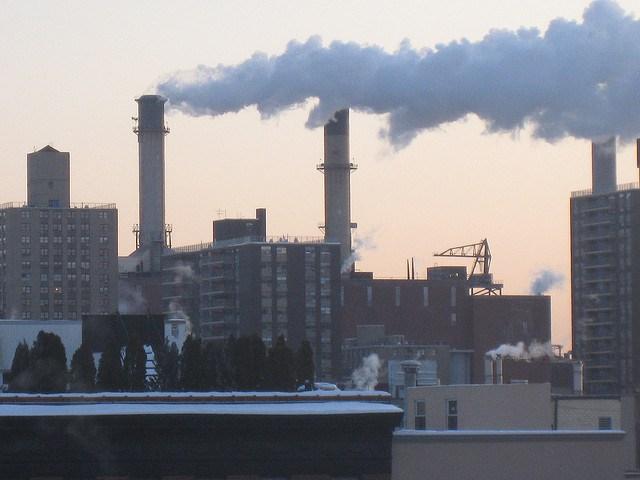

By Raminder Chowdhary
The saying goes – what you don’t measure you cannot manage.
Investors globally (individual and institutional) are showing a growing interest in supporting environmentally responsible companies and building sustainable investment strategies, which is in stark contrast to the paucity of corporate reporting on green house gases (GHG) emissions.
Measuring Sustainability Disclosures: Ranking the World's stock exchanges, a study released in October 2014 and sponsored by AVIVA, S&P and ACCA, highlighted that only 37 percent of the largest 4,969 corporations disclosed GHG emission data in 2013. These figures are dismal considering that the companies trading on these exchanges are at the vanguard of quantitative sustainability reporting.
Regulators seem to have conveniently left investors in the dark with respect to information on corporate GHG emissions. Disclosure is one of several sustainability indicators and may not be the A-to-Z of sustainability, yet it is the most significant part. The thought is simple – mandatory disclosure requires companies to be transparent about what they emit, which places them in a better position to address their environmental impact and helps in speeding up strategies to reduce GHG footprint.
There is broad market awareness around sustainability, and it is time regulators stepped in and seek mandatory disclosure of sustainability indicators and the best place to start would be GHG emissions. At the Rio +20 conference in 2012, the U.K. was the first country in the world to make it mandatory for all listed companies to disclose emissions data in their reports. All of FTSE 100 companies now disclose this data. DEFRA, (the U.K. Deptartment for Environment, Food and Rural Affairs) estimates that such reporting will contribute to saving over 4 million tons of CO2 equivalent emissions by 2021.
This is a call-to-action for all finance ministers, stock exchanges and corporate leaders around the world to work with regulators and ensure that the investing community is not denied information that is vital to decarbonize their portfolios and the planet. The $250 trillion firepower of global capital markets should not be underestimated in its ability to finance new technologies in key areas like energy, transportation, building and industry and expediting implementation of GHG emissions reduction or removal strategies with existing technology.
The time to act is NOW.
Image credit: Flickr/Salim Virji
Raminder Chowdhary: He earned two Master's Degrees in Economics and Business Admn. and worked for MNC's around the World as a supply chain specialist. He is the founding member of One Earth Foundation - an NGO focusing on conservation of natural eco-systems, preservation of ancient wisdom and environmental education. He is based in India and is a regular speaker on various regional and national forums promoting the need for higher levels of corporate social and environmental participation and responsibility. In 2014 he was awarded the Metro AG Community Silver Star (India) for his efforts. Raminder has initiated and successfully implemented numerous projects in the sectors of TK & TCE preservation, special needs groups, livelihood challenges for indigenous communities, water, large scale forest and lakes clean up campaigns, engaging students in ecological initiatives, etc
Global Dairy Gets Sustainability: Now Where Do the Other Livestock Groups Stand?
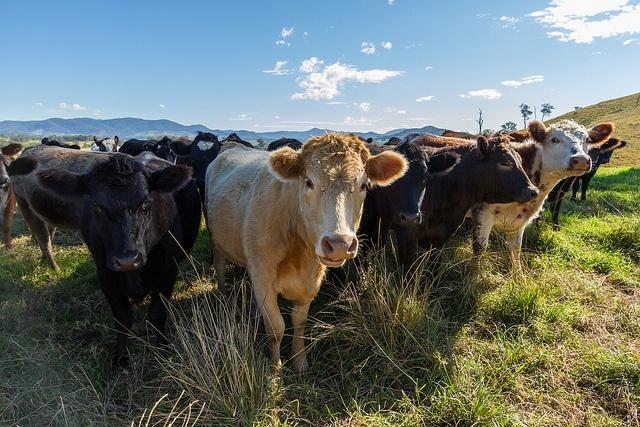

By Aidan Carrie Ganzert
After the FAO Livestock’s Long Shadow report was released in 2006, the dairy industry found itself at ground-zero for criticism as a major sector contributor to climate change. Less than a decade later, thanks to the efforts of the Global Dairy Agenda for Action, the sector is poised to be a leader in sustainability. How did this happen, and where are the other livestock groups?
The wake-up call from the FAO report caused a shift in industry thinking. In 2009, the Global Dairy Agenda for Action (GDAA) was created by the international dairy industry with the specific objective of addressing climate change concerns. The dairy sector acknowledged that change was needed. But change didn’t come quick enough, and for many years following the report, the sector solely focused on reducing greenhouse gas emissions throughout the dairy value chain, without considering other facets of sustainability.
Then came the innovation.
The governors of the GDAA realized through stakeholder conversations that greenhouse gas emissions weren’t the only impact associated with dairy production. The sector announced that, if the industry was to survive and thrive in the future, sustainability needed to be explored through environmental, social and economic lenses.
That set off the effort to build a robust platform that was recently announced – the Dairy Sustainability Framework (DSF). The DSF is truly a framework from which mitigation initiatives can be continuously developed, rather than permanently set in stone, with the goal of measuring impact on a list of strategic intent criterion.
The criteria are comprehensive and include animal welfare. The 11 sustainability criteria in the DSF include: greenhouse gas emissions; soil nutrients; waste; water; soil; biodiversity; market development; working conditions; product safety and quality; and animal care.
The first annual report of the DSF was released this month, and the industry is reporting projects and initiatives currently being undertaken under each criteria. From research on soil compaction and aeration, to water use measurement and control program, to the conversion of processing plants to utilize environmental fuel – the international dairy industry in under a decade now has a comprehensive list of sustainability projects in place around the globe.
Though the DSF is new, and measurement factors for the impacts have yet to be identified, there are several notable themes to follow:
- The DSF is a holistic list of sustainability criteria, recognizing that greenhouse gases are important, but so is soil, water, waste and other impact areas.
- The DSF is voluntary and global, and the framework can be adopted for anyone in the entire value chain – from the dairy farmer in India to the large milk producer in the Netherlands.
- The DSF is a public facing exercise and quite transparent. The governance model leads the effort, indicating that the industry is committed to making sustainability a non-competitive issue.
For those individuals committed to eliminating or greatly reducing the livestock industry’s footprint, these efforts are seen as greenwashing. However, what we see is that the industry is responding to a serious threat responsibly, with transparency, and with a commitment to building a better world. The DSF seeks to be as flexible as our own planetary systems, and it is because of this that it will find success in translating the sustainability agenda across the globe.
A question remains for the other livestock industries: As the DSF further develops its model, where is the sustainability framework for the global swine and poultry industry?
Image credit: Flickr/Marc Dulmulder
Aidan Carrie Ganzert is a former international climate change researcher, currently developing innovative solutions for environmental issues in the intersections of economy and society. She will graduate with a MA in Sustainability at Wake Forest University in 2016.
BLOG – When good intentions go awry


Tony Sabatier of Friends-International warns that corporate philanthropy can sometimes be misguided.
Across Cambodia, orphanages are proliferating. Although it is a country with a recent past haunted by conflict and genocide, the last 10 years have, however, seen rapid development alongside general calm and stability, allied to a huge increase in tourism. They have also seen the number of overseas funded orphanages in the country more than double during that time.
We know from years of research that institutional care is harmful to children. What adds to the disturbing nature of this increase is the shocking fact that these orphanages are primarily being run as businesses, set up to attract the foreign dollars that flood in from well-meaning individuals and companies. In order to function effectively in attracting those donors, they need something to ‘sell’, and that something is children. Almost three quarters of the children who are currently in institutional care in Cambodia have living parents and most institutions where they are living have no child protection policies or standards of practice in place.
Families are often pressurized into giving up their children into orphanage care, despite the existence of laws in Cambodia which prioritize family and family based care over institutional care.
Donors from the business and private sectors however, continue to pledge support to organizations that in many cases are actually causing additional harm to children, and feeding the growth of an industry that far from helping children, actually exploits them.
The ChildSafe Movement campaign, ‘Don’t Create More Orphans’, launched in February 2015, seeks to raise awareness of these issues with orphanage supporters, and urges them to redirect their support to the many organizations working to keep families together and children out of unnecessary and harmful orphanage care.
ChildSafe has ten years of experience in child protection initiatives and campaigns – they have reached over 35 million people with their child protection campaign messages to date - and is powered by Friends-International, a child welfare organization that for over 20 years has saved lives and built futures for children and young people who lack opportunity.
ChildSafe’s campaign links into the concerted partnership work going on in Cambodia to strengthen families, and keep children out of institutions. Partner organizations across the country support vulnerable families and children through education and vocational training projects, and run income generation projects for parents and care takers, so they can afford to look after their children and send them to school.
Please visit http://www.thinkchildsafe.org/thinkbeforedonating/. If you or your business currently supports orphanages, please think again. Please, reconsider. Look at the list of alternatives that the website suggests. You will have a long term positive, and what’s more, a sustainable, impact, by shifting your support toward organizations which are working to strengthen families and helping them to keep their children.
Please, #THINKfamilies , not orphanages.
Picture credit: © Power970 | Dreamstime.com
B Corp movement launches in UK


B Corp, the movement seeking to change the role of business in society, has launched in the UK.
While regular companies exist for the interests of their shareholders, B Corps are companies where the interests of employees, communities and the environment rank alongside those of shareholders. B Corps are also required to change their legal documents so that employees, communities and the wider environment rank alongside shareholders in decision making processes. B Corps formally commit to the B Corp community principles through signing a declaration.
Global B Corps include Patagonia, Hootsuite, Ben & Jerry’s and Change.org and Kickstarter. In the UK 61 businesses have been certified, including Ingeus UK Limited, Generation Investment Management, The One Brand, Cotswold Fayre, Bates Wells Braithwaite, Cook and Volans.
James Perry, director at B Lab UK,the not-for-profit which exists to support the community of UK-based B Corps, commented: “Britain has shaped so much of the modern global economy, and remains the world’s leading financial centre. But it’s obvious that the global economy needs to evolve so that profit, people and planet are all served by business. We must consign to history the idea that we have to choose between them.
"The B Corp movement is enabling businesses to make a positive contribution to all three. We stand on the shoulders of giants here, and are hugely grateful for the welcome we’ve had from an inspiring group of leaders from business, government and the social economy. We look forward to working together with them in this long term endeavour to create a new economy that serves people and planet as well as profit.”
To find out more, click here.
Fortune 500 Companies Pledge to Go 100 Percent Renewable
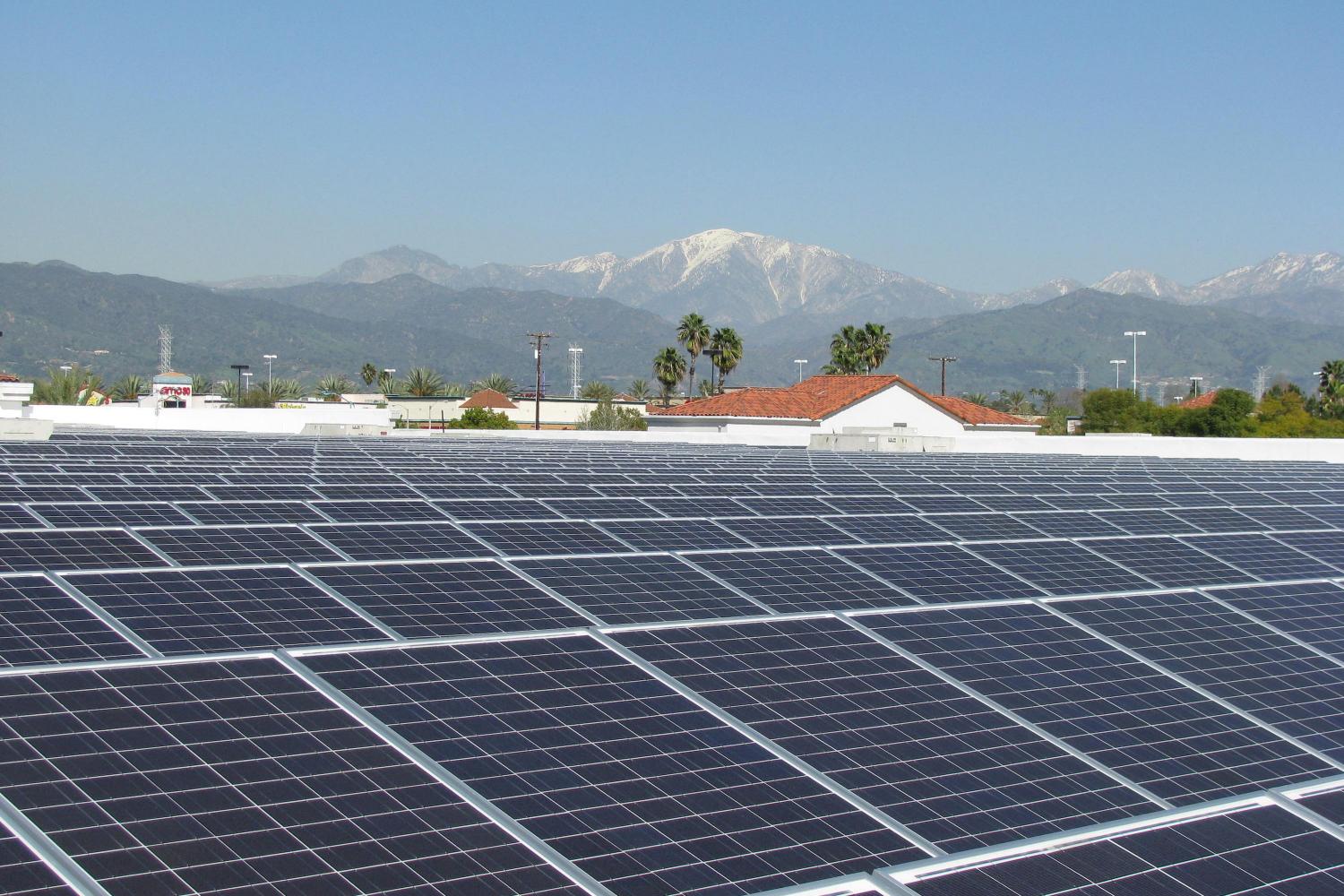
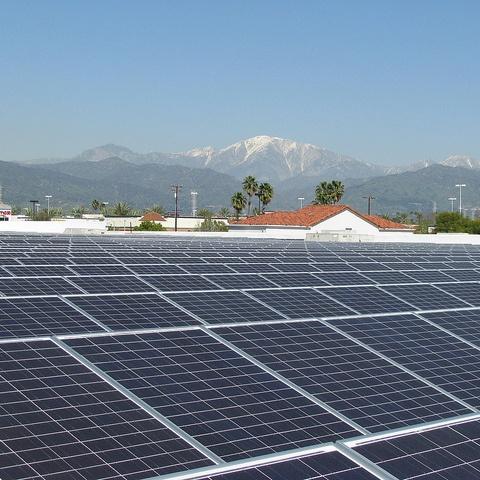
Image: Walmart is among several top companies to commit to 100 percent renewable energy, through projects including the use of solar panels at retail locations like this one in Covina, California.
Climate Week 2015 events are heating up all across New York City. On Tuesday, U.N. Secretary-General Ban Ki-Moon addressed a group of world leaders, business professionals, activists and journalists and laid out his vision for a low-carbon future. He was joined by Christiana Figueres, executive secretary of the U.N. Framework Convention on Climate Change (UNFCC), and the two unveiled a new U.N. Climate Change Secretariat initiative on climate neutrality, called Climate Neutral Now.
Not be outdone by dignitaries and politicians, the business community is gearing up to make its own mark on Climate Week and the road to the COP21 negotiations in Paris. Underscoring the buy-in of the business community on climate action is a bold commitment from a group of top Fortune 500 companies: to meet 100 percent of their electricity needs using renewable sources.
On Wednesday, nine top firms -- Goldman Sachs, Johnson & Johnson, Nike, Procter & Gamble, Salesforce, Starbucks, Steelcase, Voya Financial and Walmart -- joined the RE100 initiative, pledging to work toward the 100 percent renewable goal.
RE100 is an ambitious global campaign led by the Climate Group, in partnership with CDP, to engage, support and showcase influential businesses committed to 100 percent renewable electricity. The program launched at Climate Week 2014 with 12 big-name corporate partners, including Ikea, H&M, Nestlé and Philips, as well as Mars -- the first U.S. business on board.
The announcement brings the total number of major businesses signed on to the campaign to 36. Green desert economy developer Elion Resources Group became the first Chinese company to join in March, followed in May by the first Indian company, information technology leader Infosys. Last week saw the addition of Swiss financial services provider UBS, and earlier this week the first science-based company, Dutch business Royal DSM.
Exactly when these 100 percent renewable goals will be reached varies on a company-by-company basis, Emily Farnworth of the Climate Group, who oversees the RE100 program, told TriplePundit in an exclusive interview. But many firms are making significant headway after only a few months.
Ikea, for example, now meets around 40 percent of its electricity needs through renewable sources. The company also pledged $1.1 billion in June to help fund renewable energy infrastructure outside its own four walls. In another move of bold leadership, Infosys, the first Indian company to join the campaign, pledged to meet its renewable target by 2018 -- an aggressive goal that's sure to get noticed in the IT sector and beyond.
Mobilizing business on the road to Paris
The original goal of the program was to inspire 100 of the world's largest businesses to commit to 100 percent renewable power by 2020. But the group is seeing far more interest than it first imagined and plans make its target even more ambitious: to bring on 100 major companies before the Paris climate talks in December.
"This year is such a big year on climate change," Farnworth told 3p. "There are a lot of businesses that want to make bold commitments to demonstrate -- ahead of the negotiations in Paris -- that businesses are actually very serious about tackling climate change. And a 100 percent renewable electricity goal is one thing that can really back that up."
"A lot of companies are looking to go public with some big goals ahead of [COP21], so I'm hopeful that we'll be on track by the end of the year."
Climate Week is the ideal place and time for this latest round of Fortune 500 firms to announce their commitments renewable power. With December’s climate talks quickly approaching, this key milestone event sends a timely reminder to negotiators that leading businesses want strong climate action from governments, while increasing demand for renewables themselves.
This perfect storm of factors hits the nail on the head when it comes to the Climate Group's original aspirations when it launched RE100 at Climate Week last year: to re-think electricity generation and supply in a way that's focused on "driving corporate demand" with an ultimate goal to "influence the broader power sector," Farnworth said.
"If you can change the way that companies are talking about engaging on the issue of switching to renewables, then you can have a big influencing factor on the whole sector," she explained.
"Although the individual corporate commitments are obviously very important and extremely impressive, what we're really hoping with [RE100] is that, overall, we can galvanize support for a 100 percent renewable electricity future."
American firms pick up the pace on climate action
America’s business drive to a low-carbon economy has been picking up speed recently. Some of the most recent RE100 partners, including Walmart, are doubling-down on prior commitments to source 100 percent renewable power. The big-box retailer first made known its desire to go renewable nearly 10 years ago and is also part of the EPA's Green Power Partnership.
"Walmart set out on its journey to be powered by 100 percent renewable beginning in 2005, and today’s pledge with RE100 further affirms the importance of our aspirational goal," Enrique Ostale, president and CEO of Walmart Latin America, said in a statement. "With much of Walmart’s projected growth over the coming years set to take place in Central and Latin America, we are committed to increasing demand for renewable energy globally.”
Walmart and Goldman Sachs were also two of 13 companies in July to commit to reducing their emissions as part of the American Business Act on Climate pledge – and the White House is expected to announce new names next month.
In short, it's becoming clear that the business community isn't about to leave climate action and adaptation up to world leaders. We've heard business after business report that climate change is already posing risks to their supply chains -- not to mention leaders in the space taking it a step further and identifying climate action as an opportunity.
TriplePundit will keep our eye on RE100 as we move closer to the COP21 climate talks. Watch out for commitments from your favorite brands, not to mention potentially huge changes within the utility sector as demand for renewables reaches new heights.
Image credit: Flickr/Walmart
History of Climate Negotiations up to Paris COP21
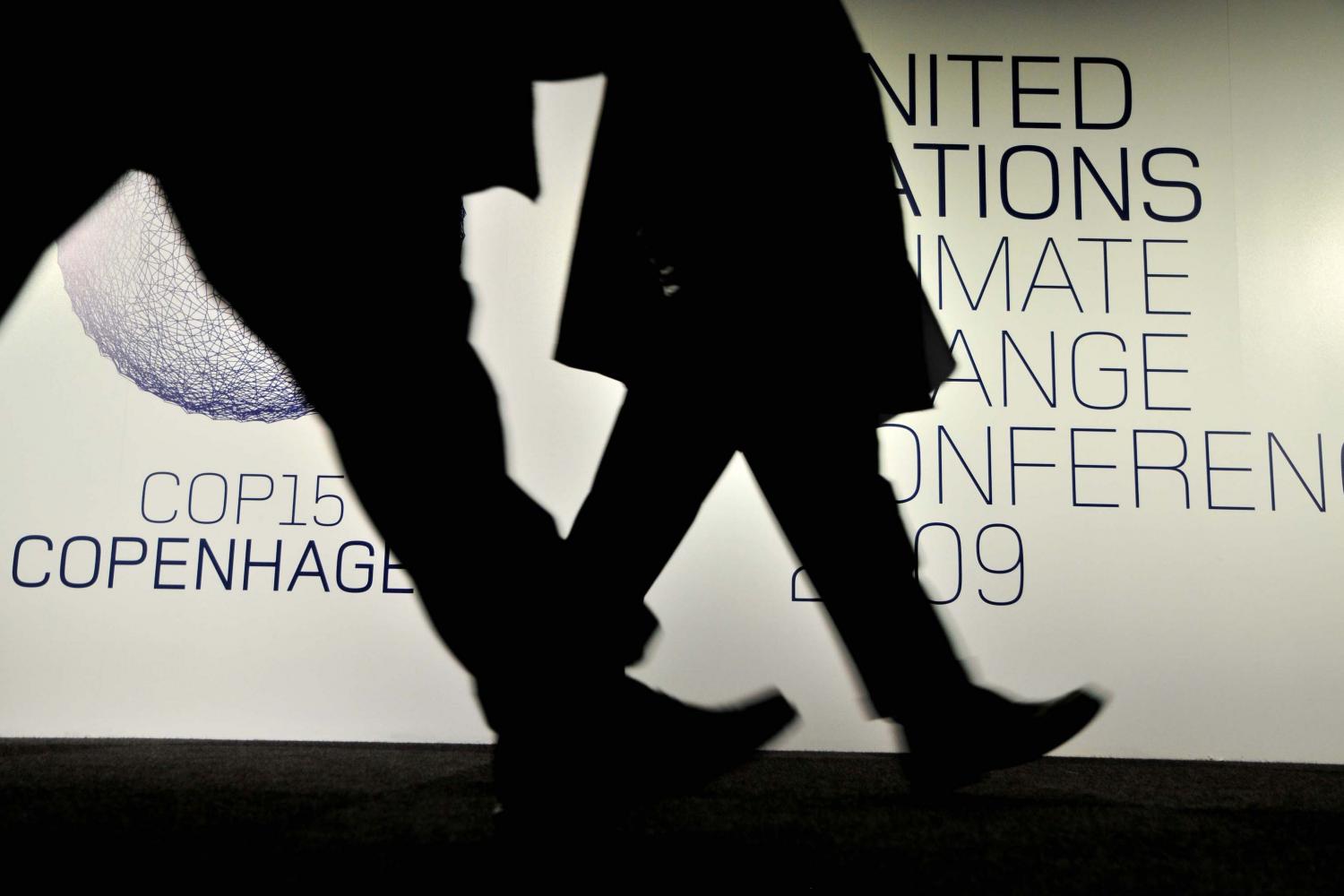
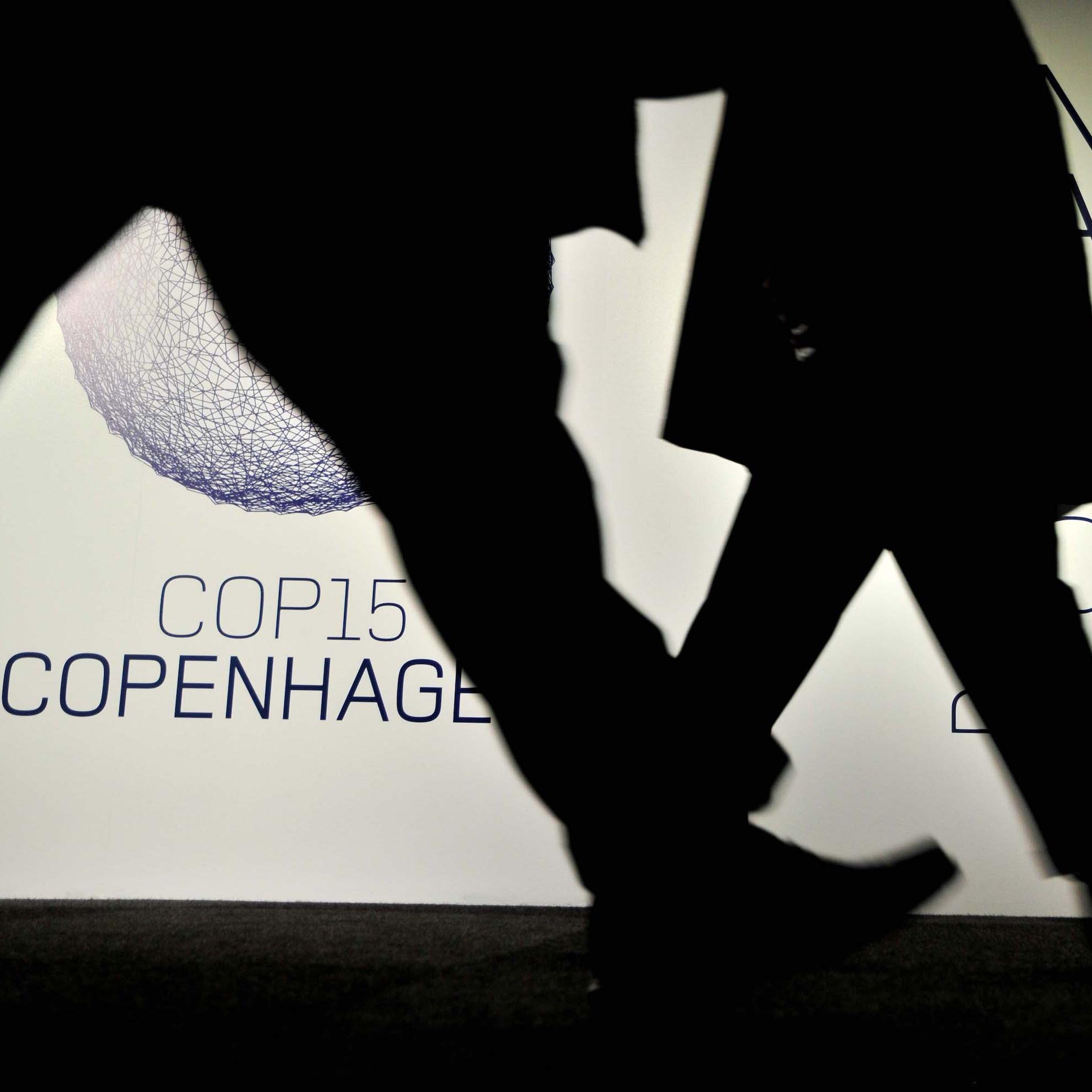
Ready for Paris? The upcoming United Nations climate negotiations are shaping up to be the biggest, potentially most historic gathering of global climate and environment leaders in human history. But just what is going to happen in Paris? And why is the meeting called COP21?
In fact, Paris is the latest in a long series of international conferences and negotiations on climate change and environmental issues. Though climate change was highlighted by scientists as early as the 1950s, only in the 1990s did it begin to garner serious attention from governments across the world as a potential threat to the global economy. Since then, there have been regular meetings between high-level international diplomats nearly every year, though the outcomes of these meetings have, thus far, been mostly disappointing. Hopefully that might soon be changing.
Here's a run-down of the prior U.N. talks on climate change and what we can expect in Paris.
1992: U.N. Conference on Environment and Development in Rio de Janeiro, Brazil
Better known as the Rio Earth Summit, this historic event included many attendees who felt strongly that momentum was there for strong action to protect the world's environmental heritage now. More than 170 governments participated, with 116 sending their heads of state or government.
The conference was focused on more than just climate and included many other aspects related to environment and sustainability. This included toxins, water, transportation and clean energy. The Convention on Biological Diversity was opened for signature at the Earth Summit, and has turned into the premier global instrument to protect biodiversity globally.
One of the major outcomes of the Earth Summit was the development of the groundwork for the U.N. Framework Convention on Climate Change (UNFCC). The UNFCC would become the home for all climate-related negotiations globally. It was ratified in 1994, and it was decided that the framework would be followed by sessions of the Conference of the Parties (COP) and its subsidiary bodies to negotiate and agree upon further action.
One of the best moments to come out of the Rio Earth Summit was the below speech by 12-year-old Severin Suzuki. In a meeting that was dominated by white-haired diplomats and arcane negotiations, it was a sign that the future of the climate movement was in the hands not of government bureaucrats, but regular people, especially the youth who would face the brunt of climate change.
1997: COP3 in Kyoto, Japan
Five years after the Rio Earth Summit, it was becoming more and more clear that climate change could have catastrophic impacts on livelihoods across the world, especially as reports from the newly-formed Intergovernmental Panel on Climate (IPCC) began to form a scientific consensus on the problem.
The Kyoto COP led to the now-infamous Kyoto Protocol, which went into effect in 2005 and is set to run until the end of this year. As one of his final decisions as chief executive, United States President Bill Clinton signed the protocol. However, in order for the treaty to become binding, it needed to be ratified by the Senate. When Republican presidential candidate George W. Bush made removing the signature one of his key campaign goals, it became certain that the United States would not take part in Kyoto in any meaningful way.
The Kyoto Protocol was considered weak by many. Besides the glaring absence of the United States, and fellow major-polluter Australia, it put almost no limits on the ability of developing countries to emit CO2. This meant that, even as countries in Europe and Japan slowed down their emissions, they were more than made up for by the boom in emissions from the global South, especially the rising powerhouse China, who in 2007 overtook the United States to become the world biggest carbon emitter. Global carbon emissions continued to rise throughout the early implementation of Kyoto.
2009: COP15 in Copenhagen, Denmark
2009 was a year of hope and expectations. The election of President Barack Obama in the United States, who is a stated supporter of climate action unlike his predecessor George W. Bush, and a growing understanding that developing countries had to play a greater role in sharing the burden of emissions cuts led many to believe that this would be the year that a strong global climate agreement could be reached.
What resulted was seen by many as a disaster. Days of closed-door meetings that shut out environmental activists and community leaders led to a weak deal brokered by President Obama and Chinese Premier Wen Jiabao that was far, far below expectations. The U.S. committed to just a 4 percent drop from 1990 levels, and the deal made no obligations on developing countries to make cuts in greenhouse gas emissions. Some poor countries, like the Maldives, that were already facing land-loss due to rising sea levels, were angry, and scientists argued that this plan would lead to a 3.5 degrees Celsius temperature rise by the end of the century, an increase that would results in serious catastrophic impacts that could harm millions globally.
Since Copenhagen
There have been several meetings since 2009, though I wouldn't blame you if you didn't know anything about them. None of them have received nearly the attention and hoopla of Copenhagen, and all have been marred by lingering negativity from the failure of 2009.
Nevertheless, there have been strong steps made in the past five years -- most notably an expansion of the United Nations REDD program, which aims to provide funds to protect tropical forests from being cut down, a major source of climate-changing emissions. Moreover, greater data-gathering technology and more sophisticated scientific analysis has allowed the IPCC to produce better-researched reports that show what the impacts of climate change will be for countries around the world. Moreover, yearly weather patterns are showing that we are currently on the worst-case-scenario path -- as every year we hit a new record for the hottest year, again and again.
The road to Paris
The tide began to shift last year when hundreds of thousands of climate activists gathered in New York City for the People's Climate March in September, calling on global governments to take action on climate. It followed the historic U.S.-China climate deal, announced jointly by President Obama and his Chinese counterpart, Xi Jingping, earlier that month, which gave rise to the hope that perhaps the world was ready to tackle what is its biggest challenge.
This year, the world is coming to Paris to determine what will succeed the Kyoto Protocol which expires at the end of this year. Compared to 1992, or 1997, the movement is more diverse, and it is coming with ideas and solutions, not harbingers of disaster. Whereas in the past, businesses often opposed strong measure, today, many are firmly standing alongside climate justice advocates calling on governments to tackle climate change head-on.
Stay tuned to TriplePundit as we'll be covering the Paris Climate Talks from now until the end of negotiations. Share your thoughts with us on Twitter at #NzymCOP21
Photo credit: CIAT/Flickr